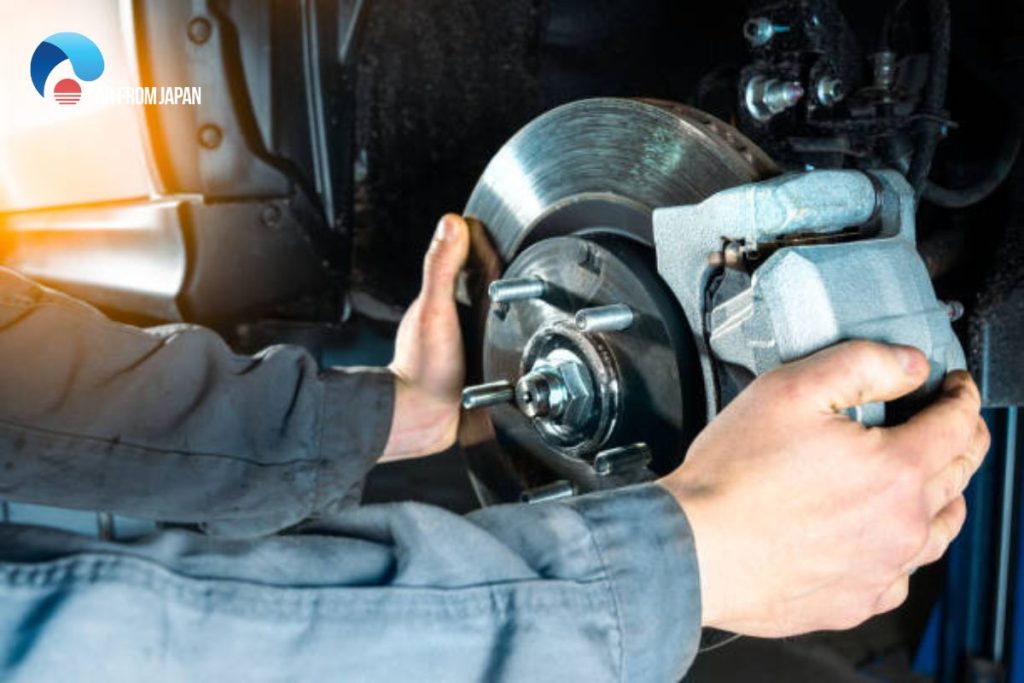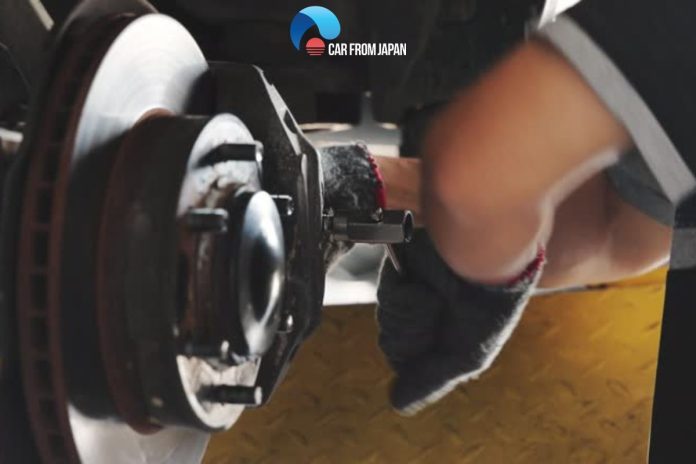Wondering what is brake boosting? Brake boosting is a captivating concept highly favored within the car enthusiast community, particularly among street racers.
If you share our curiosity and want to delve deeper into this subject, read on to discover a comprehensive guide to brake boosting, covering everything from A to Z.
Contents
- What Is Brake Boosting?
- Can Brake Boosting Harm Your Vehicle?
- Distinguishing Between Brake Boosting and Left Foot Braking
- How To Perform Brake Boosting in Automatic Cars
- How to Brake Boost a Manual Car
- Is Brake-Boosting Viable for Supercharged Vehicles?
- Can You Initiate Your Car with Brake-Boosting?
- FAQs
- Final Words
What Is Brake Boosting?
Brake boosting, a term that resonates particularly with car enthusiasts and racers, encapsulates its essence within its name.
It is, essentially, a driving technique where the brakes are cleverly employed to yield a substantial increase in a vehicle’s speed. But how exactly does this maneuver unfold?
The mechanics of brake boosting
To engage in brake boosting, the driver simultaneously applies pressure to both the brake pedal and the gas pedal. This combination of actions might appear counterintuitive at first glance, but its purpose becomes evident once we delve into its mechanics.
When the gas pedal is depressed while the brake pedal is slightly engaged, the vehicle remains in a state of controlled movement.
This equilibrium is akin to holding a sprinter at the starting line. The driver exerts restraint while poised to unleash an explosion of power at the opportune moment.
In essence, brake boosting represents a delicate equilibrium between restraint and rapid acceleration.
The purpose of brake boosting
Now that we’ve unraveled the technical intricacies of brake boosting, it’s equally important to explore the motivations behind employing such a technique. Below, we shall outline the multifaceted purposes that underpin the practice of brake boosting:

Speed enhancement
The foremost objective of brake boosting is to augment a vehicle’s speed. As previously elucidated, the driver deftly manipulates both pedals to maintain a consistent velocity before unleashing a sudden surge in acceleration.
This dramatic increase in speed is a central facet of brake boosting.
Racing dynamics
Brake boosting finds its most prominent application in the realm of racing, particularly in the context of street racing and roll racing. It serves as a strategic weapon in the racer’s arsenal, enabling them to gain a competitive edge.
In a scenario involving multiple racers, the adept utilization of brake boosting can provide the driver with a significant head start, leaving competitors in the dust.
Tactical advantage
Brake boosting embodies the essence of tactical driving. By engaging in this braking technique, a driver can outmaneuver opponents and seize control of the race.
It’s a calculated move that often catches adversaries off guard, as they may not even be aware of its execution until it’s too late.
Strategic maneuver
Beyond racing, brake boosting can be employed as a strategic maneuver in various driving scenarios where a burst of speed is required.
Whether it’s merging onto a highway or overtaking slow-moving traffic, the skillful deployment of brake boosting can offer a distinct advantage
In summary, brake boosting is a nuanced driving technique that marries the principles of restraint and acceleration.
Can Brake Boosting Harm Your Vehicle?
Once we’ve discussed what is brake boosting, its purposes, and its potential hazards, the remaining topic to address is the possible damage it can inflict on your car. Below, we outline the potential adverse effects of engaging in this activity on your vehicle’s well-being.
- Increased wear and tear on the braking system:
It’s evident that brake boosting can lead to damage in the braking system. Specifically, it can accelerate wear and tear on these components.
- Risk of smoking and fire
Brake boosting involves intensive use of the brakes, which can result in smoking from the braking system. In extreme cases, if not approached with caution, it may even lead to a fire hazard.
Overall, brake boosting is not without risks, and it’s crucial to be aware of the potential harm it can cause to your vehicle, particularly to its braking system.
Distinguishing Between Brake Boosting and Left Foot Braking
In previous sections, we discussed brake boosting and its occasional confusion with another racing technique called left foot braking.
Although these techniques share some similarities, they are fundamentally distinct. This section will provide a comparison of brake boosting and left foot braking, highlighting their key similarities and differences.
Brake boosting
- Involves simultaneously using the gas and brake pedals.
- Maintains a consistent speed.
- Aims to prepare for a subsequent increase in speed and power.
Left foot braking
- Also entails the simultaneous use of the gas and brake pedals.
- Primarily intended for decelerating or slowing down the vehicle.
- Ultimately results in coming to a stop.
Both techniques incorporate the simultaneous use of the gas and brake pedals. However, the outcomes and intentions behind these actions are vastly different.
Specifically, brake boosting entails utilizing both pedals simultaneously to prepare for a significant surge in speed and power.
While the initial stages involve maintaining a smooth and consistent speed, the ultimate goal is to achieve a noticeable acceleration.
Conversely, left foot braking is a technique employed to slow down or decelerate the vehicle, ultimately leading to a complete stop. When a driver utilizes left foot braking, the intention is to reduce speed or halt the vehicle’s motion.
In summary, brake boosting and left foot braking share similar processes and theories. However, the crucial distinction lies in their outcomes.
Brake boosting enhances engine power and speed, while left foot braking is geared towards slowing down or stopping the vehicle.

How To Perform Brake Boosting in Automatic Cars
Brake boosting in automatic vehicles is relatively straightforward compared to manual cars, as there are no clutch wear concerns. Here are two methods to achieve brake boosting, with some slight variations in the steps but the same end result:
Method 1: Brake first
- Reach a consistent speed of approximately 20 mph. While 20 mph may seem modest for racing maneuvers, it’s usually sufficient. Gradually apply pressure to the brakes during this process.
- Once the brakes are fully engaged, depress the gas pedal while paying attention to the sound of the turbochargers spooling up.
- When the turbochargers begin to accelerate, release your foot from the brakes to experience the exhilarating rush of power! Be prepared for some intense exhaust noises, but it’s all part of the experience.
Method 2: Brake and gas pedal simultaneously
- Increase your vehicle’s speed to at least 20 mph. For this method, 30 mph is even better.
- Place your left foot on the parking brake and your right foot on the gas pedal, applying pressure to both pedals simultaneously.
- Using your left foot, gently engage the parking brake while simultaneously pressing the gas pedal with your right foot.
- Maintain this position for approximately 2 to 3 seconds. Then, release your foot and let the vehicle accelerate on its own. You’ll be amazed by its performance!
How to Brake Boost a Manual Car
Brake boosting in a manual car follows similar steps to automatic cars, with the main difference being that you need to be in lower gears to achieve the desired outcome.
It’s important to note that excessive wear on your clutches and drivetrain can impact the car’s long-term durability.
Method 1: Using the handbrake
Handbrakes are convenient tools for manual cars and are especially useful for those who prioritize safety.
- Depress the clutch pedal and rev the engine to around 3000 RPM.
- Engage the handbrake and keep it engaged while gradually releasing the clutch pedal.
- As the vehicle begins to move, slowly release the handbrake until the engine produces a whirring sound.
- Now, apply maximum acceleration and enjoy your high-performance ride!
Method 2: Using the footbrake
For drivers who are not comfortable with handbrakes, the footbrake is another option, although it may pose more safety risks than the handbrake method.
- Depress the clutch pedal and rev the engine to around 3000 RPM.
- Press the footbrake while gradually releasing the clutch pedal.
- Gradually release your foot from the footbrake until the engine roars as the vehicle starts moving.
- Maximize the throttle and enjoy the exhilarating experience!
Please exercise caution and ensure safety when attempting brake boosting, as it can affect your vehicle’s performance and safety.
Is Brake-Boosting Viable for Supercharged Vehicles?
No, it’s not possible, despite certain theories suggesting otherwise. Most supercharged vehicles have intricate designs that prevent drivers from achieving a significant boost.
Turbochargers are known for delivering a speed boost by spooling up to overcome lag, releasing power when you release the brake pedal.
Superchargers, on the other hand, can’t achieve the same results without additional components (often with high costs). Even with additional support, the outcome remains uncertain and inconsistent.
Can You Initiate Your Car with Brake-Boosting?
Yes, you can utilize brake-boosting to launch your car into action from a complete stop, akin to BMW’s Launch Control function.
However, such practices put considerable strain on the car’s engine, which is why some drivers prefer a conventional rolling start.
Alternatively, some opt for BMW models that feature the aforementioned Launch Control mode, providing similar results without stressing the powertrain.
FAQs
Can you brake boost while rolling?
Yes, you can brake boost while rolling. Brake boosting involves applying the brakes and accelerator simultaneously to increase turbocharger spool-up and achieve a quicker launch. While typically done from a standstill, the technique can be applied while rolling at low speeds to gain a burst of acceleration. However, it’s important to note that brake boosting can put stress on your drivetrain and should be used cautiously.
Is brake boosting the same as launch control?
Brake boosting is just spinning your torque converter up to its stall. Also, if your car is turbocharged, it will spool the turbo up to a certain psi. With launch control, it will do the same thing, but also, depending on the car, it will adjust other aspects.
Can you drive without a brake booster?
Yes, you can drive without a brake booster, but it will be significantly harder. The brake booster assists in applying force to the brakes, making them easier to press. Without it, you’ll need to exert much more effort on the brake pedal to achieve the same stopping power. This can be tiring and make it difficult to stop quickly in an emergency.
Final Words
Now you know what is brake boosting and some of its related issues! Overall, brake boosting is a driving technique that combines braking and acceleration.
But it’s generally not common due to safety risks, increased wear on the vehicle, fuel inefficiency, potential transmission strain, and legal issues.
It should be performed with caution and by experienced drivers. It’s advisable to stick to conventional driving methods for safety and vehicle longevity.



